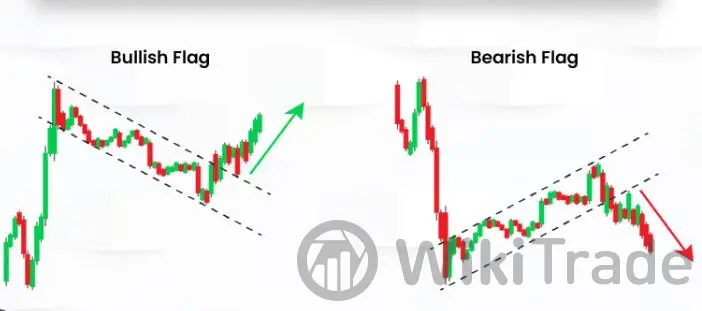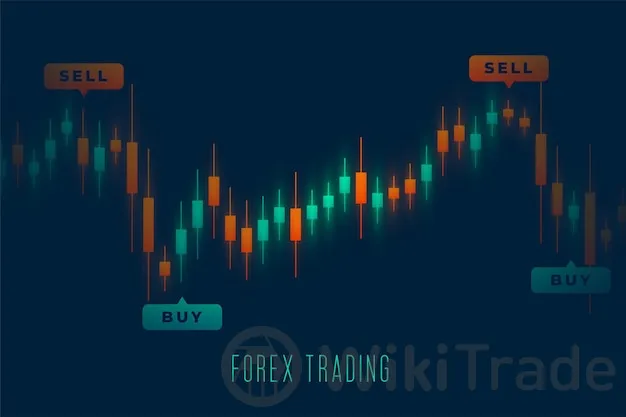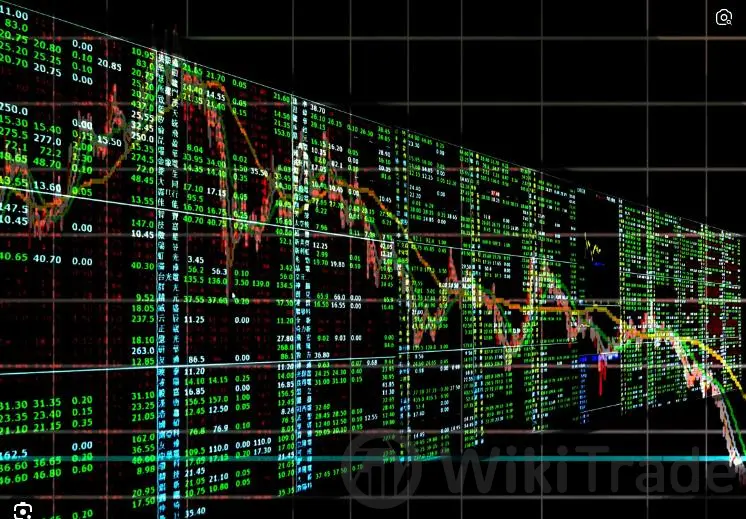How to Trade Forex with Signals
Abstract: To trade Forex with signals, follow live signals and manually copy them to your trading platform by opening buy/sell positions as indicated. Utilize expert analysis for trade ideas, including stop loss and take profit levels . Consider both automated and manual signals, and choose a provider with a strong track record . Always test signals on a demo account before live trading .
In the realm of forex trading, where markets are perpetually dynamic, the distinction between profit and loss often hinges on timing and strategy. Forex signals frequently provide essential guidance for traders, particularly those who are either new to the field or balancing trading with a demanding lifestyle. These signals, produced through human analysis or automated algorithms, act as a means to simplify the intricacies of trading.

What Are Forex Trading Signals?
Consider a scenario in which you operate a business reliant on the procurement of international goods, while the currency markets exhibit erratic fluctuations. This unpredictability can profoundly affect your expenses, highlighting the importance of foreign currency risk management. Forex trading signals serve as an instrument for addressing this risk, guiding traders in the timely buying or selling of particular currency pairs, thereby potentially alleviating foreign exchange risk.
How Forex Signals Help Manage Trading Risk
The management of trading risk in the forex market is significantly aided by forex trading signals. Fundamentally, a forex trading signal serves as a notification that suggests the optimal timing for purchasing or selling a particular currency pair, derived from real-time market analysis. Typically, these signals include critical information such as entry points, stop-loss limits, and take-profit targets. Below is a representative example:
- Currency Pair: GBP/USD
- Action: Sell
- Entry Price: 1.3050
- Stop-Loss: 1.3100
- Take-Profit: 1.2950
This signal indicates that a sell position on GBP/USD should be initiated when the price attains 1.3050, aiming to realize a profit as the price declines to 1.2950. To mitigate risk, it is advisable to set a stop-loss at 1.3100, which will trigger an exit if the market moves unfavorably.

The Function of Forex Signals in Mitigating Foreign Currency Risk
The forex market exhibits a high degree of unpredictability, frequently influenced by elements such as global political dynamics, economic data releases, and even natural calamities. For both businesses and individual traders, forex signals serve to mitigate some of this uncertainty. By obtaining advice regarding optimal entry and exit points in the market, traders can circumvent potentially detrimental market fluctuations and enhance the management of their foreign exchange investments.
Categories of Forex Trading Signals
Various forms of forex trading signals exist, each fulfilling a distinct role based on your trading strategy. Understanding which type to utilize can enhance your ability to manage risk in forex trading and effectively maneuver through the often unpredictable forex market.
Automated Signals versus Manual Signals
Manual Signals: Generated by skilled traders or analysts leveraging their expertise, these signals offer actionable trade recommendations. They hold particular significance in navigating intricate foreign exchange risk scenarios, where human intuition and market acumen can yield a competitive advantage.
Automated Signals: Originating from algorithms or trading bots, these signals are designed to monitor the forex market in real time. Particularly beneficial for trading forex stocks, automated signals efficiently pinpoint opportunities that may be overlooked during manual analysis. Nevertheless, caution is advised; foreign exchange platforms that guarantee flawless success rates via automation frequently exaggerate their assertions.

Fundamental Signals versus Technical Signals
Technical signals: Technical signals are based on chart formations, historical price information, and indicators such as Moving Averages or the Relative Strength Index (RSI). Traders who concentrate on short-term market movements frequently utilize these signals to take advantage of variations in currency values. In the context of trading on an FX platform, these signals play a vital role, as the ability to make swift decisions and access real-time data is essential.
Fundamental Signals: These signals are derived from macroeconomic occurrences, including central bank policies, employment statistics, and geopolitical events. They play a crucial role in assessing the overall foreign exchange risk encountered by businesses. For instance, organizations engaged in international trade must comprehend the implications of heightened foreign exchange risk on their operations, and fundamental analysis can offer valuable understanding in this regard.
Managing Risk Through Reliable Sources: Paid Versus Free Signals
It is essential to consider the advantages of both free and paid signals. While free signals can serve as a suitable introduction for novice traders, paid signals typically offer greater accuracy and more comprehensive analyses, which often encompass risk management strategies. For example, traders engaged in forex trading in Australia or other significant markets frequently opt for premium services that deliver timely updates on FX derivatives and forex stocks, enabling them to remain informed about market fluctuations.
How to Effectively Trade Forex Using Signals
Effectively utilizing forex signals necessitates more than mere adherence to alerts without question. It requires a comprehension of how these signals integrate into a comprehensive risk management strategy, as well as the ability to execute trades with discipline.
Selecting a Reliable Signal Provider
The selection of an appropriate forex signal provider is essential for effectively managing risks associated with foreign currency. It is important to seek out providers that demonstrate transparency regarding their trading history, possess a robust record of successful trades, and provide clear elucidations on the generation of their signals. For enterprises engaged in foreign currency risk management, especially those with considerable exposure to variable exchange rates, a dependable signal provider can deliver critical insights.
Assessing Signals with Prudence
It is crucial to comprehend the wider market conditions even when utilizing signals. Solely depending on a signal without taking into account external influences can result in errors. For instance, while a signal might indicate purchasing EUR/JPY, if global occurrences are inducing instability in the Japanese yen, it may be prudent to reconsider the timing of the transaction. This is where an understanding of FX derivatives—financial instruments created to mitigate foreign exchange risk—becomes beneficial.

Effectively Manage Risk Through Appropriate Stop-Loss and Take-Profit
Configurations The utilization of forex signals does not negate the necessity for rigorous risk management practices. It is essential to define explicit stop-loss limits to safeguard your account against unforeseen market fluctuations, while also establishing take-profit objectives to secure profits. The capacity to limit potential losses is vital in the context of managing risks associated with foreign exchange investments in an erratic market.
Maintain Discipline to Prevent Overtrading
While signals may present a multitude of trading opportunities, it is crucial to refrain from overtrading. A significant risk associated with dependence on an excessive number of signals is the tendency to pursue every potential opportunity, which can deplete your capital. This concern is especially pertinent for individuals who are new to trading, as the allure of acting on every signal may result in inadvertent losses. Concentrate on high-quality signals that correspond with your risk tolerance and overarching strategy.
The Challenges and Risks Associated with Trading Using Forex Signals
Although forex signals may offer a tactical edge, they are accompanied by risks that all traders must comprehend.
Excessive Dependence on Signals
A significant challenge associated with the utilization of forex signals lies in the inclination to depend on them without conducting independent research. Although these signals can offer valuable insights, they ought not to supplant a trader's analysis. Ultimately, trading represents a fusion of both art and science, wherein human judgment remains essential in evaluating foreign exchange risk.

The Accuracy of Signals Affected by Market Volatility
The foreign exchange market exhibits significant volatility, and signals are not exempt from these variations. In rapidly changing market conditions, a lag in the execution of a signal can result in a pivotal distinction between profit and loss. Furthermore, external influences such as political developments or economic upheavals can undermine the effectiveness of even the most thoroughly analyzed signals.
Exercise Caution Regarding Signal Misinterpretation
A frequent mistake involves the misinterpretation of signals. Misunderstanding the technical elements of a signal or inaccurately assessing its timing can result in losses, even when the signals themselves are sound. Therefore, possessing a robust understanding of foreign exchange risk management is essential for traders to interpret signals with greater accuracy.




Top News
 WikiTrade
WikiTrade WikiTrade
WikiTrade WikiTrade
WikiTrade WikiTrade
WikiTrade WikiTrade
WikiTrade WikiTrade
WikiTrade WikiTrade
WikiTrade WikiTrade
WikiTrade WikiTrade
WikiTrade WikiTrade
WikiTrade


